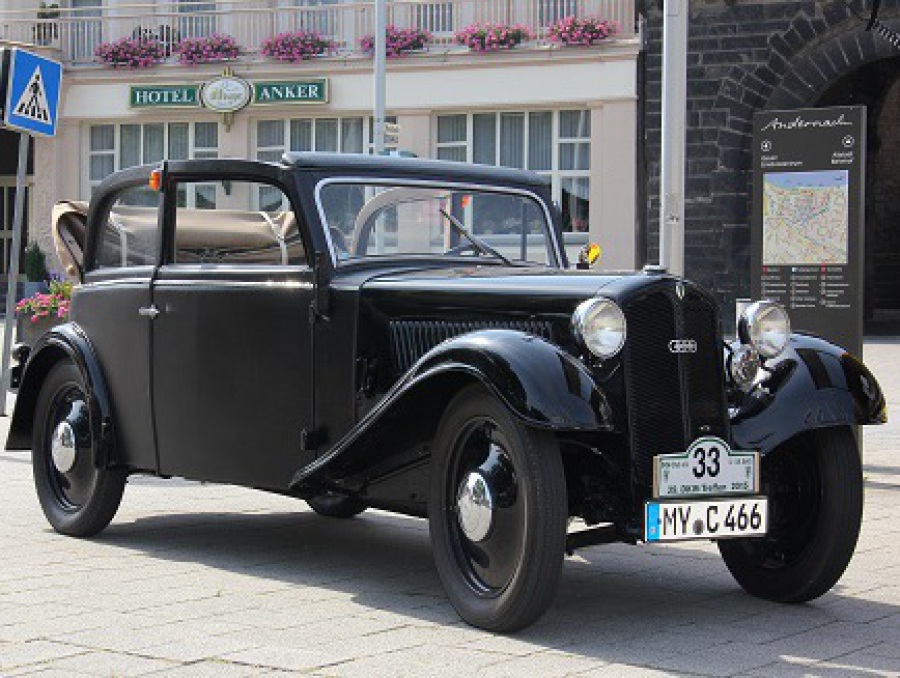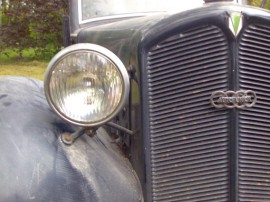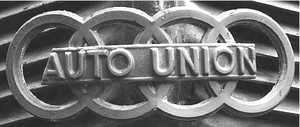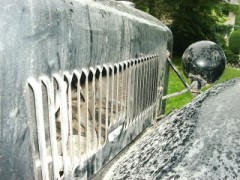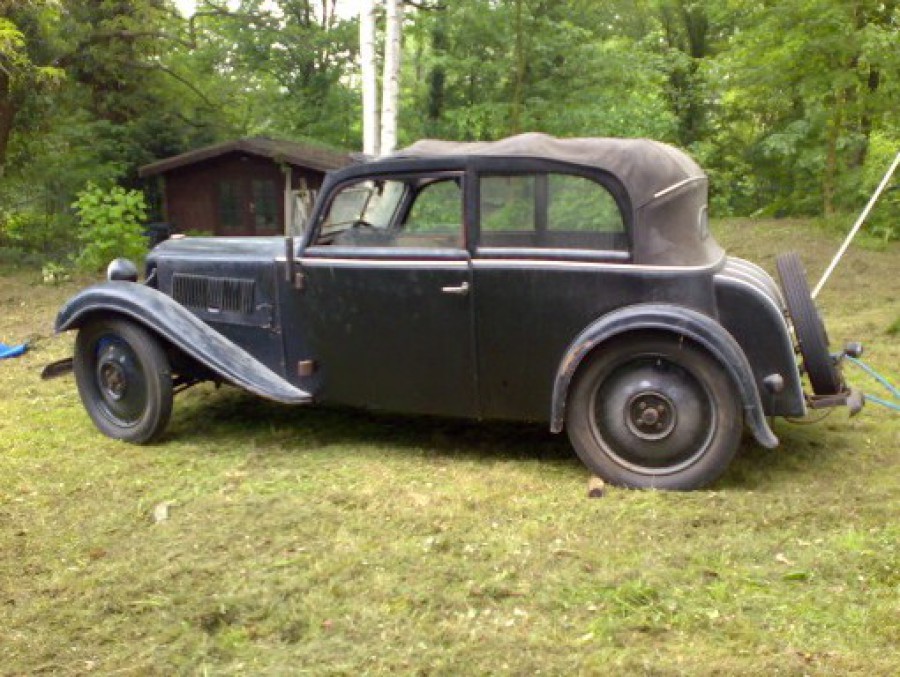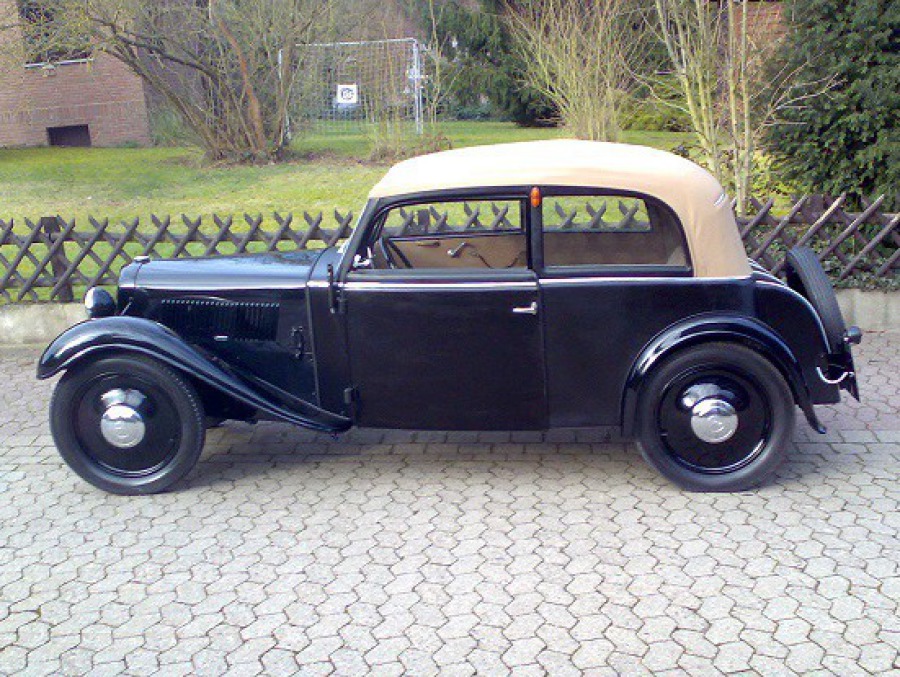
Nice to welcome you on my DKW homepage. Learn more about the history of that small historic car. The circumstances it was constructed, its owner, how the car made ends meet in the Second World War and how it helped in the economic miracle of Germany (-West in those days) to set the economy back on track.
How it got forgotten and how it came back again.
And last but not least: how it was restored and how it returned to the road.
It started in 1936...
In my year of contruction, 1936, turbulent times were going on:
The "Silberpfeil race cars" (silver arrows) were speeding from victory to victory, driven by Hans Stuck, Bernd Rosemeyer and other fearless hotshots. Troops had been stationed in the demilitarised Rhineland, and the peoples of the world watched as deedless as astonished.
I'm a DKW type F5, the "5" in my designation relates to the year of my presentation in 1935, and the "F" means "front car", which was a protected mark and a reference to its front wheel drive - a real sensation in theese days - even invented by a French.
1934 the body of the former "F2" had been reworked and marketed as "F4", but the older F2 model (presented in 1932) was sold for another year under the old name. Then, in 1935, both versions were replaced by the F5, but my bigger brother was called "F5 Meisterklasse (masters class)" and was equiped with a 20 horsepower engine, while me by myself was called "F5 Reichsklasse (class of empire)", basically a "capped F2" (apart from a few details). And as I have been an economic version, powered by 18 hp only.
As usual today to many brands of cars, only my big brother named "Meisterklasse" ("class of master") participated of some improvements and cosmetic enhancements - today this is called "face lift". To me as a piggybank on four wheels, these enhancements have been denied, which is why I'm largely in the style of the body of 1932. Oh, what a really wonderful old car I am!

